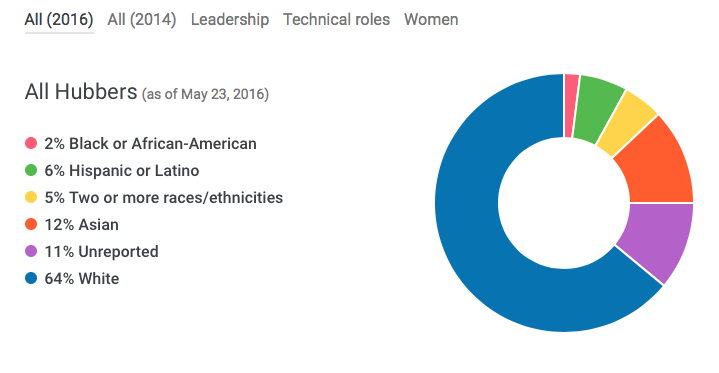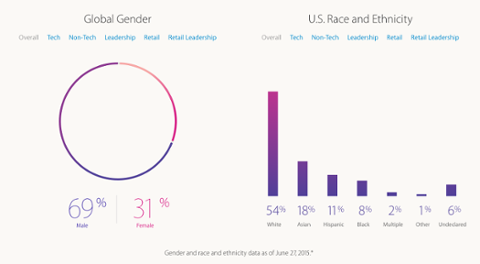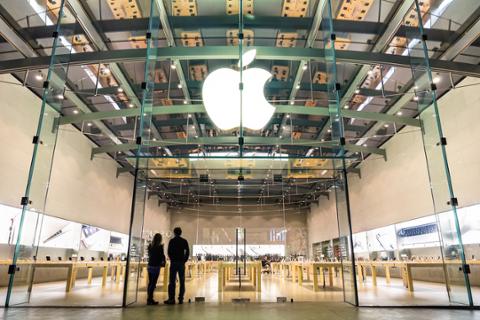 If you’re a developer—or even just someone interested in software—you know GitHub, the enormous software repository. If you’ve been following GitHub for a couple years, you also know the company has wrestled with some very high-profile issues related to gender in the tech workplace. In 2014, one of GitHub’s founders stepped down in the wake of accusations that a female employee had faced systemic harassment. After that incident, the company pledged to make changes. “This journey started for us in 2014, after we made some major mistakes and people got hurt,” GitHub CEO and co-founder Chris Wanstrath wrote in a note posted to diversity.github.com. “We were forced to ask ourselves hard questions about where we fell short.” The company’s diversity, he added, was “nowhere near industry standard, which is already too low.” After more than 18 months of effort, GitHub is claiming some progress. “For example, GitHub has grown from under 1% women of color at the end of 2014 to over 10% today,” read a new posting on the company’s corporate blog. “We’ve increased the number of women in leadership roles to 35% while the number of women overall has grown from 21% in 2014 to 36% today.” But that doesn’t mean the issue is solved: “There are no Black/African-American GitHubbers in management positions, which is unacceptable. Diversity in technical roles lags behind our overall organization. Our gender imbalance remains.” Like other tech firms, GitHub’s strategy for altering its employee diversity centers on tweaking its recruitment pipeline. It has also partnered with organizations “that are successfully removing barriers to entry in tech” such as Maven, CODE2040, and EveryoneOn. Other tech firms such as Apple and Intel have likewise claimed small diversity gains over the past year. If the experience of these companies proves anything, though, it’s that making a workforce more diverse is a lengthy process defined by incremental progress.
If you’re a developer—or even just someone interested in software—you know GitHub, the enormous software repository. If you’ve been following GitHub for a couple years, you also know the company has wrestled with some very high-profile issues related to gender in the tech workplace. In 2014, one of GitHub’s founders stepped down in the wake of accusations that a female employee had faced systemic harassment. After that incident, the company pledged to make changes. “This journey started for us in 2014, after we made some major mistakes and people got hurt,” GitHub CEO and co-founder Chris Wanstrath wrote in a note posted to diversity.github.com. “We were forced to ask ourselves hard questions about where we fell short.” The company’s diversity, he added, was “nowhere near industry standard, which is already too low.” After more than 18 months of effort, GitHub is claiming some progress. “For example, GitHub has grown from under 1% women of color at the end of 2014 to over 10% today,” read a new posting on the company’s corporate blog. “We’ve increased the number of women in leadership roles to 35% while the number of women overall has grown from 21% in 2014 to 36% today.” But that doesn’t mean the issue is solved: “There are no Black/African-American GitHubbers in management positions, which is unacceptable. Diversity in technical roles lags behind our overall organization. Our gender imbalance remains.” Like other tech firms, GitHub’s strategy for altering its employee diversity centers on tweaking its recruitment pipeline. It has also partnered with organizations “that are successfully removing barriers to entry in tech” such as Maven, CODE2040, and EveryoneOn. Other tech firms such as Apple and Intel have likewise claimed small diversity gains over the past year. If the experience of these companies proves anything, though, it’s that making a workforce more diverse is a lengthy process defined by incremental progress. GitHub Claims Diversity Progress
 If you’re a developer—or even just someone interested in software—you know GitHub, the enormous software repository. If you’ve been following GitHub for a couple years, you also know the company has wrestled with some very high-profile issues related to gender in the tech workplace. In 2014, one of GitHub’s founders stepped down in the wake of accusations that a female employee had faced systemic harassment. After that incident, the company pledged to make changes. “This journey started for us in 2014, after we made some major mistakes and people got hurt,” GitHub CEO and co-founder Chris Wanstrath wrote in a note posted to diversity.github.com. “We were forced to ask ourselves hard questions about where we fell short.” The company’s diversity, he added, was “nowhere near industry standard, which is already too low.” After more than 18 months of effort, GitHub is claiming some progress. “For example, GitHub has grown from under 1% women of color at the end of 2014 to over 10% today,” read a new posting on the company’s corporate blog. “We’ve increased the number of women in leadership roles to 35% while the number of women overall has grown from 21% in 2014 to 36% today.” But that doesn’t mean the issue is solved: “There are no Black/African-American GitHubbers in management positions, which is unacceptable. Diversity in technical roles lags behind our overall organization. Our gender imbalance remains.” Like other tech firms, GitHub’s strategy for altering its employee diversity centers on tweaking its recruitment pipeline. It has also partnered with organizations “that are successfully removing barriers to entry in tech” such as Maven, CODE2040, and EveryoneOn. Other tech firms such as Apple and Intel have likewise claimed small diversity gains over the past year. If the experience of these companies proves anything, though, it’s that making a workforce more diverse is a lengthy process defined by incremental progress.
If you’re a developer—or even just someone interested in software—you know GitHub, the enormous software repository. If you’ve been following GitHub for a couple years, you also know the company has wrestled with some very high-profile issues related to gender in the tech workplace. In 2014, one of GitHub’s founders stepped down in the wake of accusations that a female employee had faced systemic harassment. After that incident, the company pledged to make changes. “This journey started for us in 2014, after we made some major mistakes and people got hurt,” GitHub CEO and co-founder Chris Wanstrath wrote in a note posted to diversity.github.com. “We were forced to ask ourselves hard questions about where we fell short.” The company’s diversity, he added, was “nowhere near industry standard, which is already too low.” After more than 18 months of effort, GitHub is claiming some progress. “For example, GitHub has grown from under 1% women of color at the end of 2014 to over 10% today,” read a new posting on the company’s corporate blog. “We’ve increased the number of women in leadership roles to 35% while the number of women overall has grown from 21% in 2014 to 36% today.” But that doesn’t mean the issue is solved: “There are no Black/African-American GitHubbers in management positions, which is unacceptable. Diversity in technical roles lags behind our overall organization. Our gender imbalance remains.” Like other tech firms, GitHub’s strategy for altering its employee diversity centers on tweaking its recruitment pipeline. It has also partnered with organizations “that are successfully removing barriers to entry in tech” such as Maven, CODE2040, and EveryoneOn. Other tech firms such as Apple and Intel have likewise claimed small diversity gains over the past year. If the experience of these companies proves anything, though, it’s that making a workforce more diverse is a lengthy process defined by incremental progress. 


